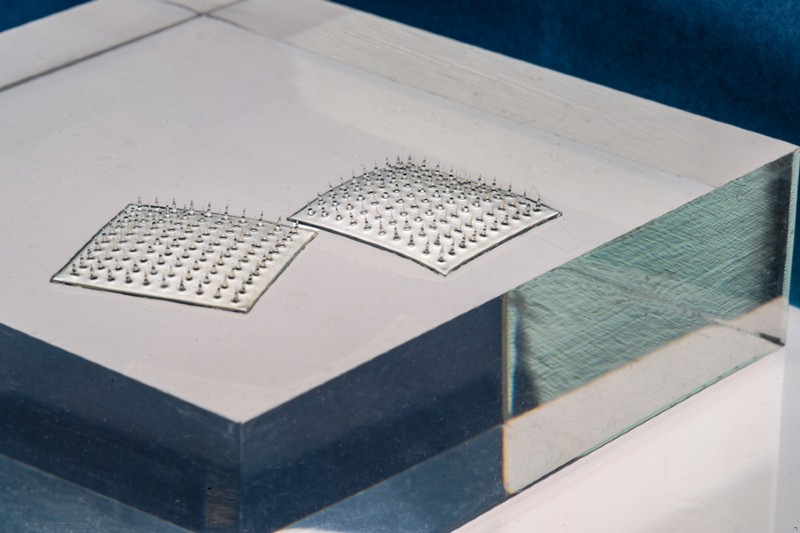Here’s a little device that may help solve the big problem of food waste.
A sensor developed at MIT uses a set of microneedles to push through packaging and determine whether the food inside is safe to eat.
The creators describe the silk microneedles as like Velcro.
Once attached, they draw fluid out of the food and into the back of the device.
That’s where there are two types of bioink that will react to spoiled food.
One bioink changes color if the pH of the food is in a range that shows it’s gone bad.
The other produces a color change if it comes into contact with contaminants like E. coli bacteria.
In a way the device also works in reverse: if neither bioink changes, the food is likely to be ok, even if it’s passed its sell-by date.
With further development, a smart food sensor could head off food waste while also serving as an early warning system for salmonella outbreaks and other large-scale problems in the food supply.
I get the sense that could be pretty useful.
Transparency is usually better than the alternative, but if you’re up high on a bridge, that may be an exception.
China is home to several thousand glass footbridges, as in, you can walk across them and look through them at what’s down below.
That includes a world record 1,725 foot long bridge where you can see a river 660 feet down.
Maybe hold onto something solid as you walk by?
Velcro-like food sensor detects spoilage and contamination (MIT)
Would You Walk on the World’s Longest Glass Bridge? (Hyperallergic)
Listeners can sense that our Patreon backers are making this show more special every day
Microneedle food sensor photo by Felice Frankel, courtesy MIT

